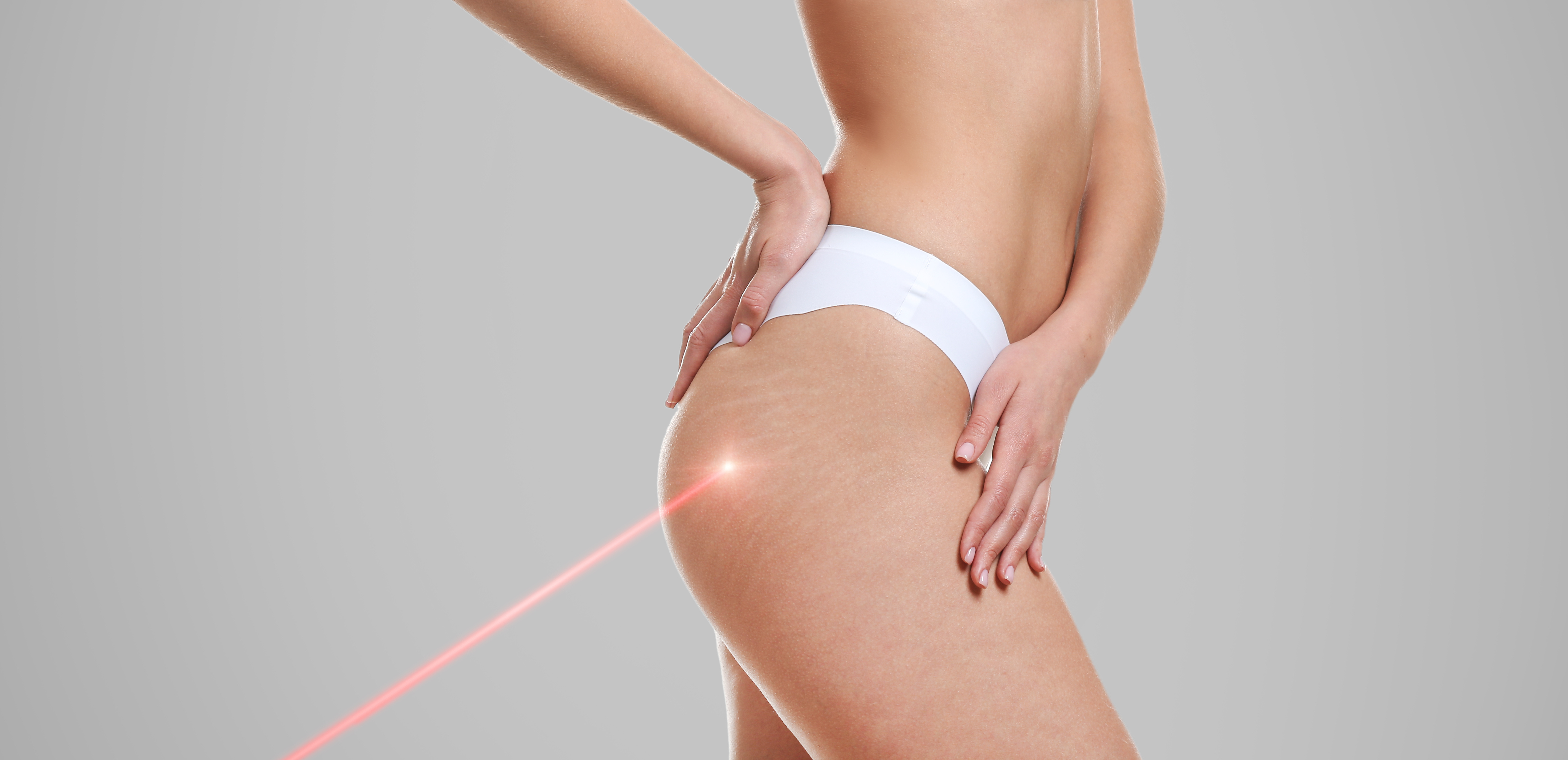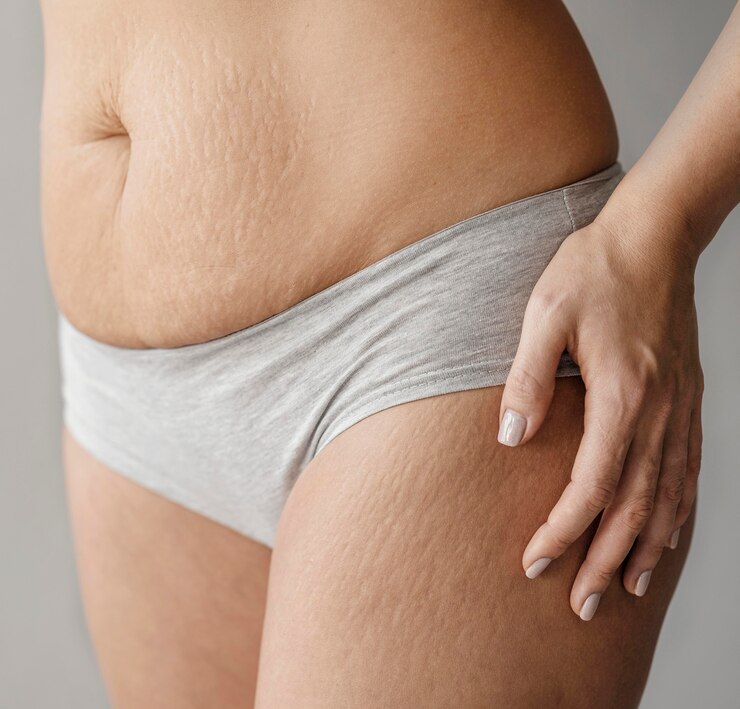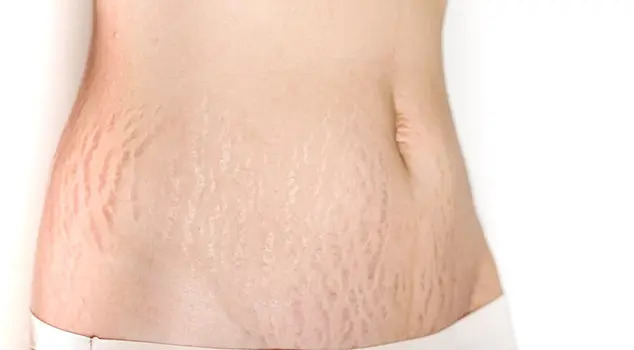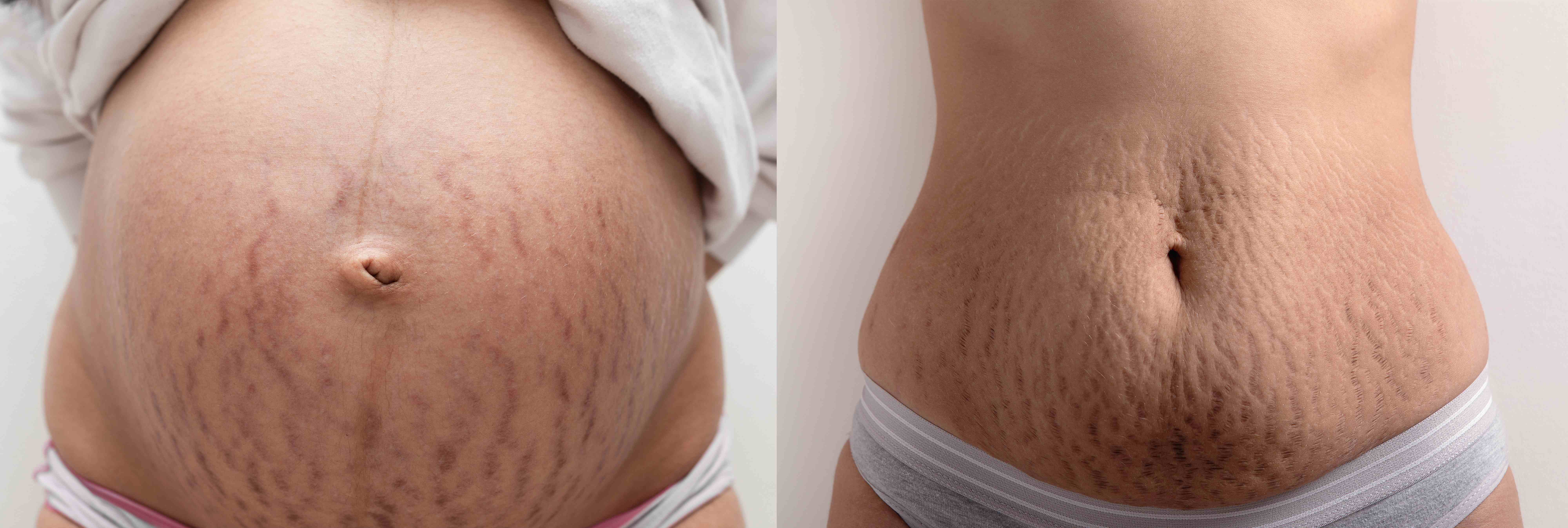
-
Doctor:
Dr. Lukesh Patil
-
Service
Stretch Marks Treatment
-
Tag:
Best Stretch Marks Treatment in Navi Mumbai
Stretch marks are a common skin concern, often appearing after pregnancy, rapid weight changes, or growth spurts. While they’re completely normal and occur due to collagen breakdown, that doesn’t mean they should dictate how you feel about your skin. The good news is that with the right treatment, you can reduce their visibility and boost your confidence.
At Seraphic Aesthetics, our expert team, led by board-certified plastic surgeon Dr. Lukesh Patil, offers highly effective stretch mark treatments in Navi Mumbai.
Let us help you embrace smoother, healthier skin and feel more confident than ever before!
What Are Stretch Marks?
Stretch marks, or striae, are long, thin, and rippled marks that commonly appear on the body due to skin stretching. These marks affect about 80% of people and are often linked to pregnancy, or rapid weight changes
Types of Stretch Marks:
-
Red Stretch Marks: These are newer marks and usually appear in a reddish or purplish colour.
-
White Stretch Marks: As stretch marks age, they fade to a silvery-white colour, becoming less noticeable.
Though common in pregnant women, teens, and anyone who experiences rapid weight changes, these marks are essentially a type of scar.

Factors Contributing to Stretch Marks
Stretch marks happen when the skin is stretched beyond its natural limits, causing the collagen and elastin fibres beneath the surface to break. Here are some factors that contribute to their formation:
-
Genetics: : If stretch marks run in your family, you're more likely to get them
-
Age: As you get older, your skin loses elasticity, which can lead to stretch marks
-
Cortisone: Higher levels of cortisone can reduce the skin's ability to stretch
-
Dehydration: Dry skin is more vulnerable to developing stretch marks
Effective Treatment Options for Stretch Marks
While some stretch marks may fade over time without treatment, many people seek solutions to reduce their appearance, especially when they affect their confidence. Fortunately, there are several treatment options available.
Laser Treatment
Laser therapy is one of the most effective ways to reduce the appearance of stretch marks. At Seraphic Aesthetics, we use CO2 Laser Resurfacing, which targets damaged skin and stimulates collagen production, promoting healthier, smoother skin. This treatment works wonders on both red and white stretch marks, though multiple sessions are typically needed to see the best results.
Morpheus8
Morpheus8 is a fractional Radio-frequency skin treatment that stimulus production and remolding of the collagen in underlying layers of the dermis by targeting deeper layer of the skin which eventually improves appearance of stretchmarks significantly.
Recovery After Stretch Marks Treatment
Recovery is quick and straightforward. Here's what you can expect
Benefits of Stretch Marks Treatment
Stretch marks treatment offers several transformative benefits:
- Improved Skin Texture and Appearance: Stimulates collagen production for smoother, more even skin.
- Boosted Confidence: Reduces stretch marks, helping you feel comfortable in your skin.
- Enhanced Skin Elasticity: Restores flexibility by promoting collagen and elastin production.
- Targeted Precision: As collagen production increases, you’ll see continued improvement over several months.Focuses on problem areas for accurate, effective results.
Stretch Mark Laser Treatment Cost in Navi Mumbai
The cost of laser treatment for stretch marks varies based on factors like the size of the area being treated, the number of sessions required, and the severity of the stretch marks. At Seraphic Aesthetics, Dr Patil will provide you with a clear and detailed breakdown of the cost during your consultation, ensuring transparency and helping you plan confidently.
Why Choose Us?
When you choose Seraphic Aesthetics, you're choosing expert care and outstanding results. Here’s why our patients trust us:
- Expert Care: Our experienced team delivers safe and effective stretch mark treatments.
- Tailored Treatment Plans: We create personalised plans to achieve your specific skin goals
- Comfort and Support: Your well-being is our top priority, and we are with you every step of the way.
- Proven Success: Our satisfied patients speak to the quality of our work.
- Transparent Pricing: We offer clear, upfront pricing with no hidden fees.
Book Your Consultation Today
Ready to transform your skin? Book your consultation today with Dr. Lukesh Patil and learn how our treatments can reduce the appearance of your stretch marks.
Frequently Asked Questions
- 1. What causes stretch marks to
form?
Stretch marks occur when the skin stretches beyond its natural limits, breaking collagen and elastin fibers. Common causes include pregnancy, rapid weight changes, genetics, and dehydration. - 2. Can all types of stretch marks
be treated?
Yes, both red (new) and white (older) stretch marks can be effectively treated using advanced CO2 laser resurfacing at Seraphic Aesthetics. - 3. How many sessions are required
for stretch mark laser treatment?
Typically, 3 to 6 sessions are needed for visible results, depending on the stretch marks' severity. - 4. How much does stretch mark
laser treatment cost in Navi Mumbai?
The cost depends on the size of the treatment area, the severity of the stretch marks, and the number of sessions required. Dr. Patil ensures transparent pricing during your consultation.


